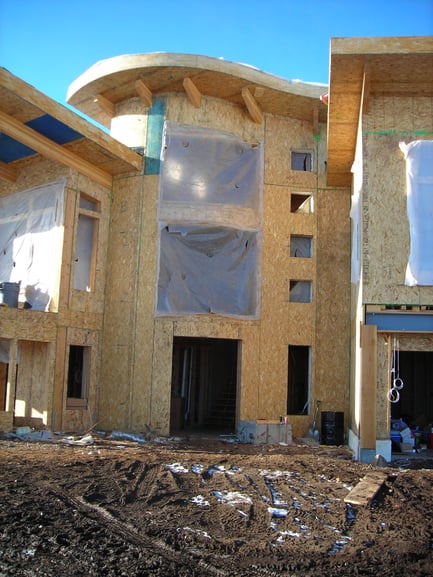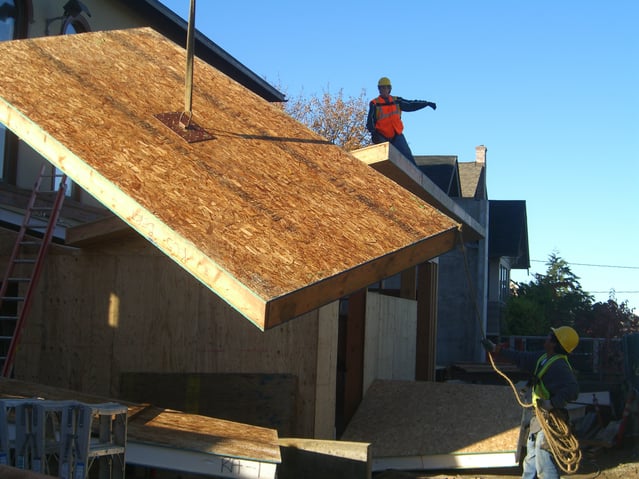Building Envelope Summit: Seattle & Nor. California Locations
The Summit focuses on the most important assembly in every structure - the envelope. 4/29 in Seattle, WA & 5/1 in Nor...
With so many energy efficiency building terms and challenges out there, what is what? We laid this out in laymen’s terms, btu/kWh acronym free and are keeping it short and simple…or at least try the best we can.
 Sungazing House, Salt Lake City, UT
Sungazing House, Salt Lake City, UT
NET ZERO ENERGY BUILDING (ZEB)
Net Zero Energy Building Basic Idea: A building that is optimally efficient and, over the course of a year, generates energy on site, using clean renewable resources, in a quantity equal to or greater than the total amount of energy consumed on site. Buildings like this are also called net-zero carbon or carbon neutral buildings due to the fact that the on site production of electricity produced and put back on the grid will be equal or greater than the energy consumed from the grid.
Net Zero Building Benefits:
Net Zero Building Example:
PASSIVE HOUSE (PassivHaus)
Passive House Basic Idea: Passive takes the Net Zero House to the extreme and using almost no energy to heat or cool the home. Picture a home so efficient that it doesn’t need a furnace! A Passive House focuses on creating an extremely efficient building envelope (roof, walls, floor) that and reduces (and regularly eliminates) the amount of mechanical equipment needed for HVAC systems (Heating, Cooling, etc.). The Passive envelope takes an extreme approach to the insulation, air sealing, windows, doors, and elimination of thermal-bridging … creating a super efficient building that maintains a regulated temperature with minimal additional heating and cooling. Passive Houses use about 10% of the heating and cooling energy of homes built to meet today’s energy codes. In addition to the building envelope, Passive structures are intentionally designed as an integrated system, with site orientation, solar gain, energy generation, ventilation, air quality, humidity, health, comfort—and economy—all taken into account with every product and design decision.
Passive House Benefits:
Passive House Example:
LIVING BUILDING CHALLENGE (LBC)
 Bertschi School Science Wing SIP Roof Install, Living Building Challenge
Bertschi School Science Wing SIP Roof Install, Living Building Challenge
Living Building Basic Idea: Simply put…the ideal building! Living Buildings must show proven performance of producing energy rather than consuming it. Living Buildings reduce the impact on the environment overall and actually benefit the ecosystems they inhabit. Construction methods can vary from Net Zero to Passive strategies, but must also incorporate proven renewable energy, where the elements of the building (solar or geothermal or wind) provide energy needed to operate the building. The structure is required to be completed and fully operational for one year before being awarded LBC certification (more emphasis on actual energy performance rather than meeting guidelines with projections).
The Living Building Challenge is a program initially launched by the Cascadia Green Building Council and has quickly become the most advanced green building rating system in the world.
Living Building Example:
References:
The Summit focuses on the most important assembly in every structure - the envelope. 4/29 in Seattle, WA & 5/1 in Nor...
In a world where technological advancements have propelled industries forward, construction remains stagnant, entrenched in..
When it comes to utilizing Structural Insulated Panels (SIPS) in your projects, there are key considerations that can..
As the oldest manufacturer in the SIPs industry, Premier’s SIP system is the proven prefabricated building envelope framing system for your next commercial or residential structure. Faster, stronger, and greener than outdated lumber framing methods, SIPs are the future of framing. Join the other thousands of structures built with SIPs, and contact the expert in your local region to get started.